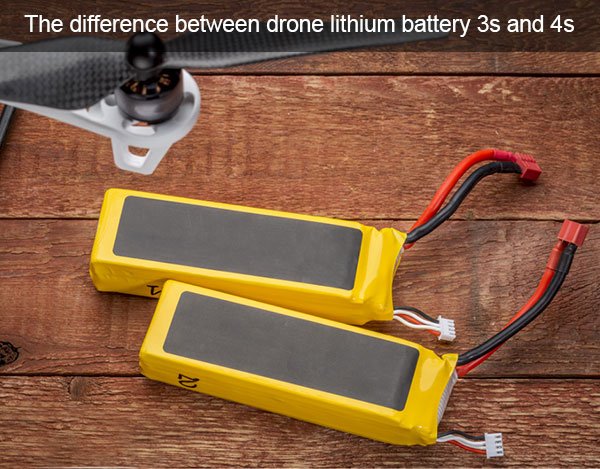What do the 2s, 3s, 4s… marked on the drone lithium battery mean?

2s, 3s, 4s are all multiples of a single lithium battery, and they are connected together to form a higher voltage battery. If two batteries or two batteries are connected in series, the voltage will increase; 2S battery means that there are two lithium batteries in this battery, and the lithium battery of one battery is 3.7V, so the battery voltage of 2S is 7.4V, which is the same as the battery voltage of 3S is 11.1V, and the voltage for 4s is 14.8v.
2s, 3s, 4s difference
For example, is the difference between ovonic 2s 5000mah, ovonic 3s 5000mah and ovonic 4s 5000mah just voltage? Is the usage time the same?
Battery power problem
If the drone uses a 4s battery instead of a 3s battery, the voltage is higher and the current is lower, but the power is the same for the same load. Power = voltage * current, so lower current doesn’t mean lower power. If you have a 300 watt motor and use a 3s battery it will draw 27 amps, then if you switch to a 4 s battery it will draw 20.3 amps, which doesn’t draw less energy or power. This is the same 11.1v * 27amps = 300 watts and 14.8v * 20.3amps = 300 watts.
The voltage corresponds to the motor
When the applied voltage is higher, the motor can spin faster. The RPM (revolutions per minute) of the motor of the drone with no load depends on the KV value of the motor – RPM = Voltage x KV.
Let’s say our FPV quad has a 2300KV motor. When powered by a fully charged 3S battery (11.1V), the theoretical RPM is 2300 x 11.1 = 25530. This means that without any propellers, the motor rotates about 25,530 times per minute. When using a 4S battery (14.8V) to power the same motor, the RPM is 2300 x 14.8 = 34040 and you can see a significant increase in RPM.
An increase in RPM means that the motor can produce more pulling force, more power, faster flight speed and agility. However, the throttle lever has also become more responsive and harder to control.
Note that a 4S setup is usually heavier than a 3S due to the added weight of the regulators, batteries, etc.
Choose 3s or 4s
If you choose RTR/RTF, please choose according to the model manufacturer, if it is a kit, you need to choose according to the motor KV value and ESC parameters.
How to Correct Drone Lithium Battery
To protect your LiPo, you generally don’t want to consume more than 80% of its capacity on any use. In our example, you don’t want to use more than 5000 x 0.8 = 4000 mA or 11.1vx 4amps = 44.4 watts. If the battery charge falls below this level, the battery may be damaged. You can get an idea of the battery status by monitoring the voltage during the process.
When you use the energy in the battery, the voltage drops. For RC drones, many flight controllers have built-in alarms. You can program an alarm to notify you when the battery voltage drops below a preset point and tell you to land as soon as possible. If lithium batteries are overcharged or damaged, they can explode and catch fire. One sign of overcharging is when you see the battery “swell” or change its thickness.




